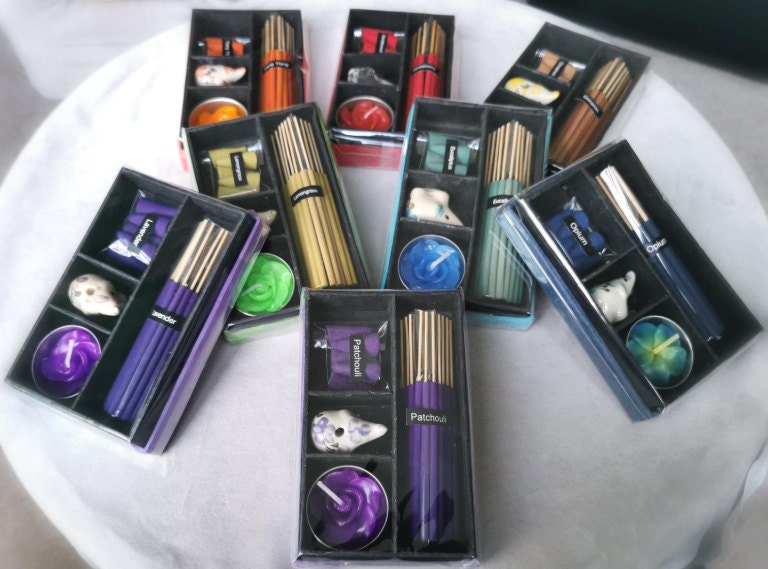Incense and candles can enhance relaxation and create a comforting atmosphere when used responsibly. By following safety precautions, choosing high-quality products, and maintaining proper ventilation, users can enjoy their benefits without the risks. Whether you burn them for spiritual practice, ambiance, or aromatherapy, prioritizing safety ensures a worry-free and enjoyable experience for you and those around you.
While incense and candles offer many benefits, they come with potential risks. Open flames can easily ignite nearby materials, causing fires. Incense smoke contains particulate matter that may be harmful to respiratory health if inhaled in excess. Additionally, some commercial incense and candles contain synthetic chemicals that can release toxins when burned. Recognizing these risks is the first step toward using them safely.
One of the most significant concerns with incense and candles is the risk of fire. Following these safety measures can significantly reduce the chances of accidents:
Keep Away from Flammable Materials – Always place candles and incense holders on a stable, heat-resistant surface away from curtains, paper, furniture, and other flammable objects.
Use Holders Designed for Safety – Secure candles in non-combustible holders and ensure incense sticks or cones are in sturdy, heat-resistant burners that catch falling ashes.
Never Leave Burning Incense or Candles Unattended – Always extinguish them before leaving a room or going to bed.
Keep Out of Reach of Children and Pets – Accidental contact can lead to burns or fires.
Trim Candle Wicks – Long wicks produce larger flames and more soot. Trimming them to ¼ inch helps maintain a steady burn and reduces fire hazards.
Avoid Drafty Areas – Breezes from windows, fans, or air conditioning units can cause candles to burn unevenly or incense to fall over.
Not all incense and candles are created equal. Some contain toxic substances that can be harmful when burned. Here’s how to choose safer options:
Opt for Natural Ingredients – Look for candles made from soy wax, beeswax, or coconut wax instead of paraffin, which releases harmful chemicals when burned.
Choose Lead-Free Wicks – Some cheaply made candles contain metal-core wicks that release harmful particles into the air. Opt for 100% cotton or wood wicks.
Select Natural Incense – Many mass-produced incense sticks contain synthetic fragrances and binders that produce toxic smoke. Choose organic or handmade incense made from pure herbs, resins, and essential oils.
Since burning incense and candles releases smoke and particles into the air, taking steps to improve air quality is crucial:
Ventilate the Space – Open windows or use an air purifier to minimize smoke buildup.
Limit Usage – Avoid excessive burning to reduce indoor pollution.
Try Flameless Alternatives – Essential oil diffusers, battery-powered LED candles, and natural potpourri can provide similar ambiance and fragrance without the risks of smoke and open flames.
Safely extinguishing candles and incense ensures that smoldering embers do not ignite accidental fires:
Use a Snuffer for Candles – Blowing out candles can spread hot wax and embers. A snuffer safely extinguishes the flame without creating sparks.
Douse Incense in Water or Sand – Simply letting incense burn out may not always be safe. Dipping the burning end in water or placing it in sand ensures it is completely out.
Check for Residual Heat – Even when extinguished, incense holders and candle holders may remain hot for some time. Avoid handling them immediately to prevent burns.
Incense and candles can be used in various settings, each requiring specific safety measures:
Bedrooms – Avoid placing candles near bedding, drapes, or wooden furniture. Never sleep with a candle burning.
Bathrooms – Use waterproof, non-slip holders and keep candles away from towels and shower curtains.
Meditation Spaces – If using incense during meditation, ensure adequate ventilation and avoid placing it too close to yourself to prevent excessive inhalation.
Outdoor Use – Wind can spread embers quickly. Always use protective lanterns or enclosed holders to prevent fire hazards.
Even with precautions, accidents can happen. Being prepared can make a significant difference:
Keep a Fire Extinguisher Handy – Ensure that a fire extinguisher is accessible in case of emergency.
Know How to Use It – Learn the PASS method: Pull the pin, Aim at the base of the fire, Squeeze the handle, and Sweep from side to side.
Have an Evacuation Plan – Familiarize household members with escape routes and emergency contacts.


